Granada, Tuesday - Thursday, June 26 - 28, 2007
Nobody had to tell us that we needed to visit Granada.
In college Mark had lived for a short time in a town called Alhambra but never anticipated seeing the original in Granada. Granada was the last Moorish city to fall to Isabella and Ferdinand and from there, on March 31, 1492, the Catholic Monarchs issued the “Alhambra Decree” of expulsion.
We arrived late in the afternoon, descending from the mountains in the northwest and circling the city. We entered from the south looking for the campsite for which we had an address, which was supposedly just outside the city, near the bus station. Wandering into a city after taking a wrong turn… because we can’t quite understand the signs seems to be a common motif in our travels. The literal meaning of the following sign is clear. However, we could never quite tell which portion of the several roads ahead the sign really intended. Not clear to us, anyway.

While frustrating, we don’t consider this a serious problem because we then just explore/wander/blundgeh in the downtown area of the city. In the van, we’re higher up than in a car and we cover much more territory than when we walk. So, on entering Granada we drove up to the top of the hill of the university before setting Gerdy to locate the campsite. Even that was a bit of a problem because the road changed names immediately before the campsite’s location. She’s so easily confused, poor thing.
Settled in and out for a walk
Though we had arrived near dinner time, about 7:30, dark was not expected to “fall” until 10:30. With the briefest of instructions, we walked the 2.5 KM to the center of town. Since we had already driven on many of the same streets we recognized intersections and public squares. Among the odd things we’ve seen on our walks are stenciled political messages. This one of Heuy P. Newton, without any text, is about the strangest so far.

Another unusual use of a cultural icon—the Einstein equation on a T-shirt (it means “Spain is very hot”):

On our way in we walked past a high-end hotel, always good for high-quality tourist maps, directions, clean toilets and less frequently in Spain, free WiFi in the lobby. With that extra guidance we found the lovely square, Bib-Ramla, where we took our photo for that day. It was surrounded by coffee shops, many of which sold hot chocolate. We also located the (closed) official Tourist Information office where we had hoped to get more details about local chocolate and Jewish sites. On our walk back we happened on the Plaza at the Cathedral, packed with spectators watching group from Senegal perform with light and “fog” as well as exciting percussion and dance.
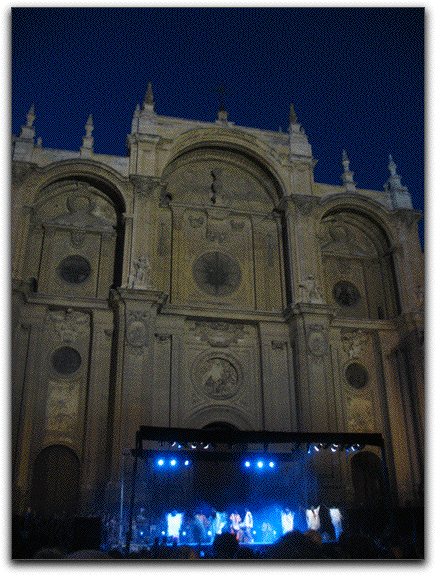
It did not seem to be religious music. The performance, especially in that location, suggests a liberalizing of Spanish culture.
Catholic Spain?
Granada was a Muslim (the word usually used is Moorish, as in “of the Moors” or “Mor[occan]”) city longer than any city in Spain. When the Jews were expelled in 1492, the local Muslims were also offered the choice of converting to Christianity or leaving. Much of the city’s old architecture remains Moorish. In fact, the primary reason people now come to Granada is because of its Moorish past: the Alhambra and the Albayzín neighborhood beneath it. We had seen a few Muslims on the Mediterranean coast of Spain. Many in Barcelona, but the numbers definitely increased when we arrived in Andalusia.
It was strange for us, as Jews, to visit these places where Jews had once contributed so much in philosophy, poetry, translation, economy. In fact, one of the theories for the origin of the name of the city is: “Gárnata” or “Gárnata al-yahud” (Granada of the Jews). And yet, the Jews never were more than a minority. The women in the photo below, while traditionally attired, are very well dressed. Even from this photo in the dark it’s clear that the fabrics have delicate patterns and are of high quality. The store window into which they’re looking was along the main commercial street.
So, what must it be like, how does it feel to be a Moslem woman living in, or visiting Granada? Do they have similar pride and also sadness at the history of their people here as we?
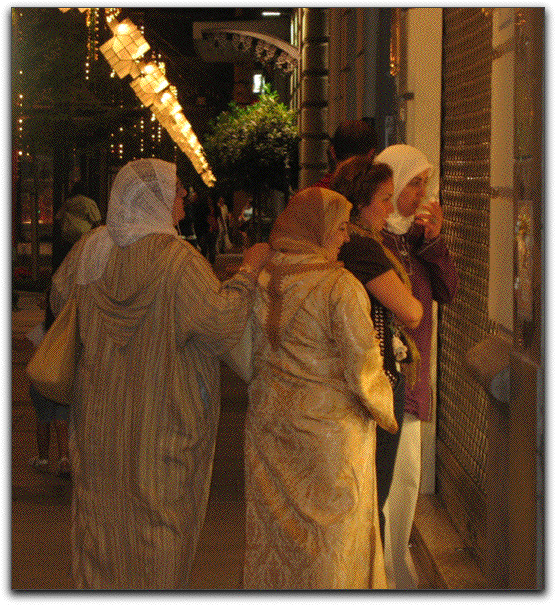
Ya like those street lamps?
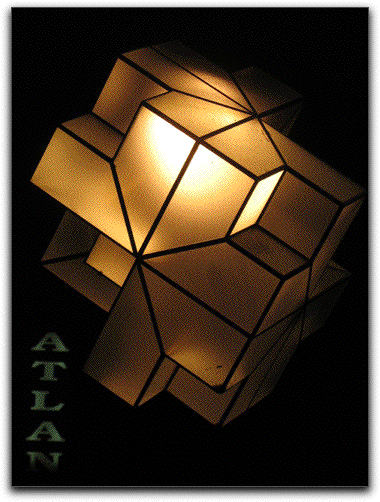
Pomegranate City
The Spanish word for pomegranate is granada. They are visible all over town and in the surrounding area, on the city logo for the water system, as car guards in the streets, on local ceramics. Many representations of them appear “burst” open, I do not know why. On our pomegranate trees at home:
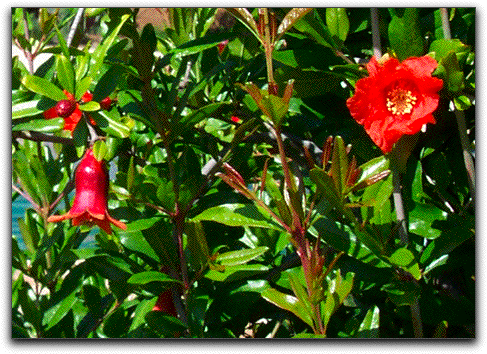
I always do my best to harvest the fruit before it bursts. We have a friend who is particularly enamored of pomegranates, so, Debbie asked me to take photos of them. But, I’m sure I missed a few. Sorry.

Pomegranate symbololizes fecundity… filled “to bursting” with all those seeds, juice and color. And yet, that very bursting becomes negative in: the grenade. Even in Hebrew, the word for pomegranate: רימון (rimon) has the same two meanings. In addition, the image decorates the tops Torah scrolls, suggesting the 613 mitzvot (the supposed number of seeds) and the richness of Torah study.
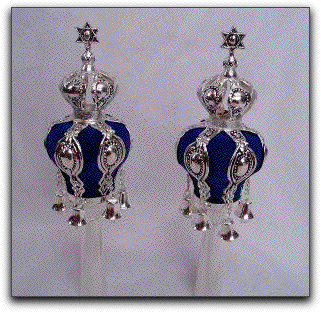
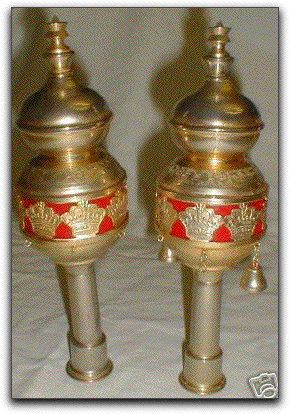
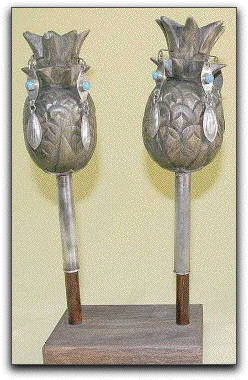
[Thanks to the sellers on eBay for the photos.]
Up to the Alhambra
Above the city of Granada stands the Alhambra. It has been the catalyst for so many romantic odes to its beauty that our attempts would be anti-climactic. Official Web sites offer its history and numerous photographs. The Darro and Genil rivers flow down from the Sierra Nevada mountains meeting in Granada to supply the city and the Alhambra with so much water that we could hear, see, and smell it running from almost every point along our walk. The Darro itself forms one of the deep ravines that made the Alhambra a valuable fortress.
During the 11th century Granada became a significant center of Jewish life. Various sources report that as much as 20% of its approximately 26,000 inhabitants were Jews. At that time, the Alhambra itself, which, according to some, had been ignored and in ruins, was renovated and rebuilt by Samuel ibn Naghrela (Samuel ha-Nagid), vizier to the King Bādīs. Among those who came to the area at that time to participate in its intellectual and cultural life were the poets Yehuda haLevi, Solomon ibn Gabirol and Moses ibn Ezra. As we strolled through the grounds with the thousands who visit daily (you have to buy tickets for admission at a specific time) we tried to imagine these young men (which they were at the time)…
climbing up the mountain on steep paths similar to those we climbed,

strolling through fountained gardens through which we strolled
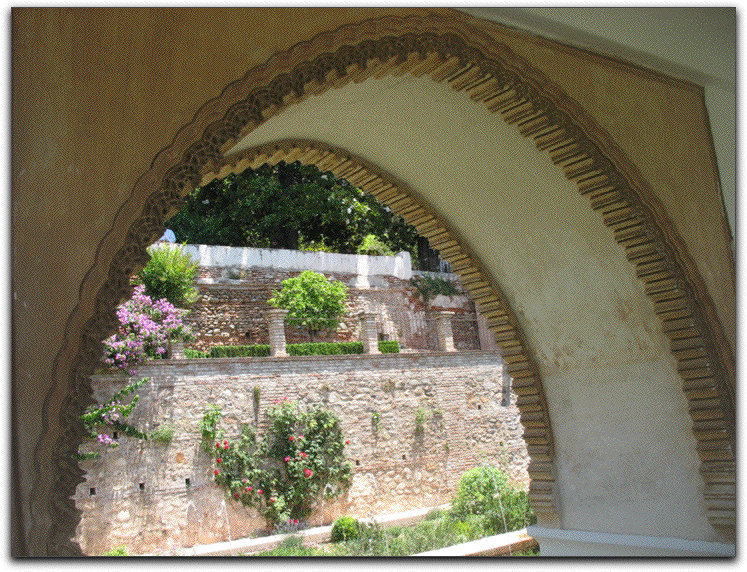

standing in courtyards where we gathered
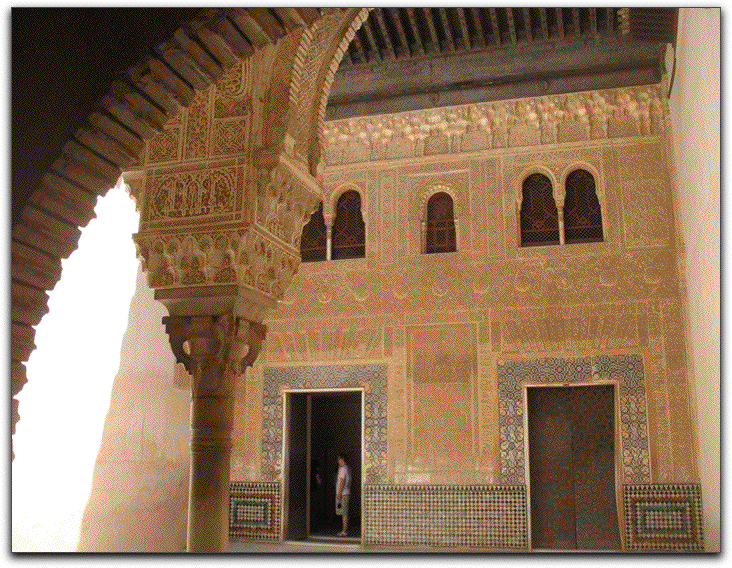
sitting in the rooms where we sat

listening to the birds sing,
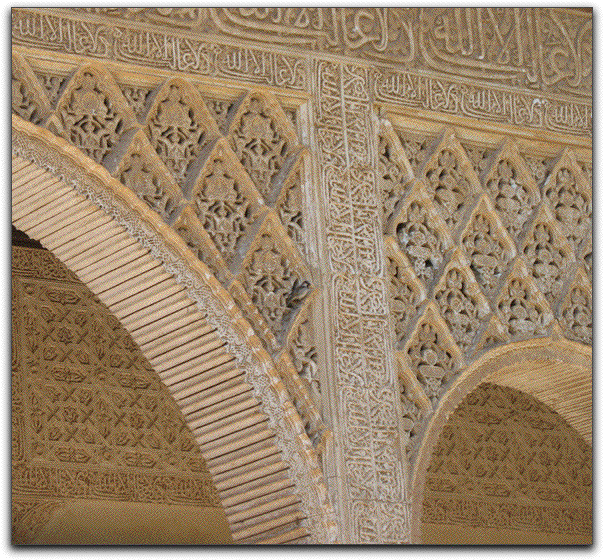
perhaps even bathing together,

and sharing their creative efforts with Muslim and Christian colleagues while overlooking the Albayzín, the city below:


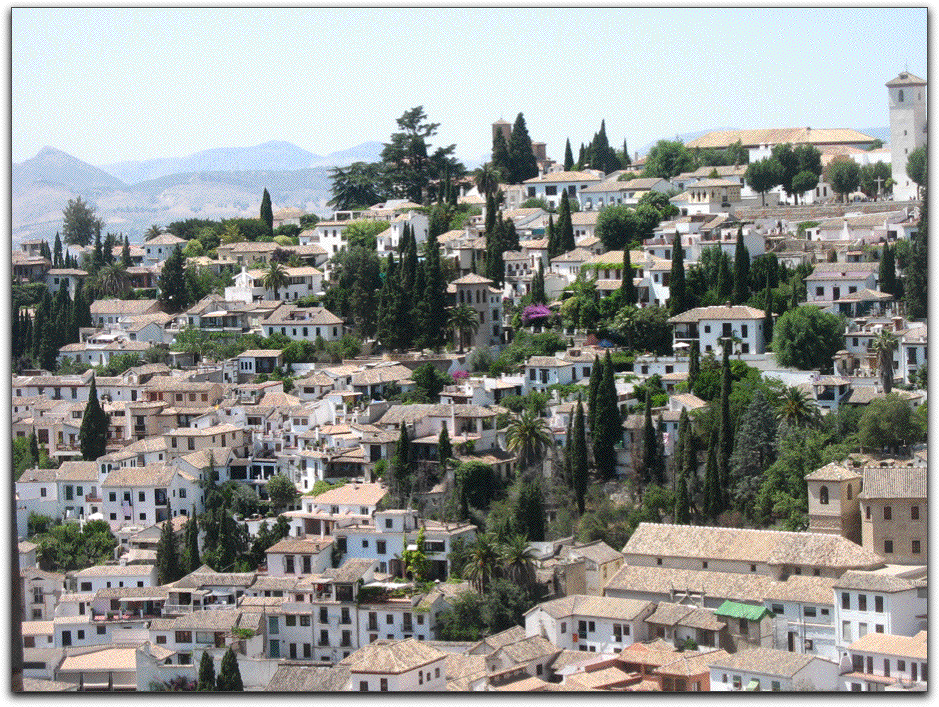
Back down the hill
Later, down the hill, we tasted the customary churros (olive-oil fried, we were assured everywhere we went) dunked in hot chocolate for the first time. Really a bit too much even for us.
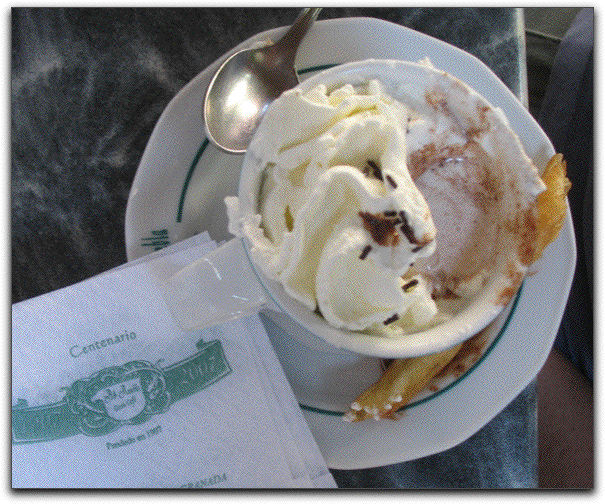
We found a little coffee shop with free WiFi around the corner from the statue of Samuel ibn Tibbon (which looks down Christopher Columbus talking with Queen Isabella in the Plaza de Isabel la Católica)
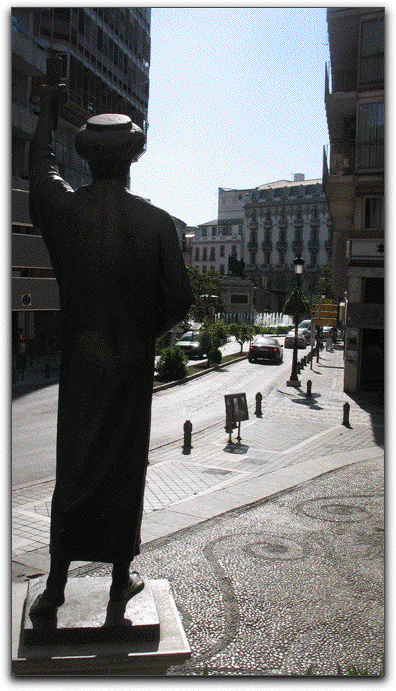
and celebrated Avigail’s birthday. We then returned to the Cathedral Plaza to celebrate our own anniversary
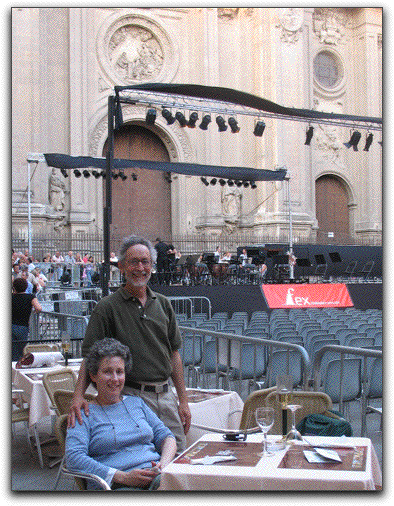
with dinner overlooking the fun concert of a brass ensemble.
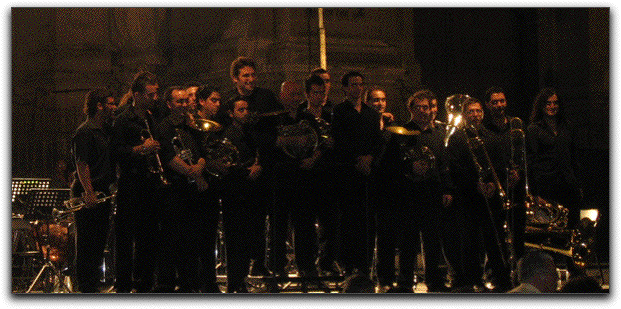
And, no, while the concert was a bit kitschy, they did not perform Granada.
start || back || next


























